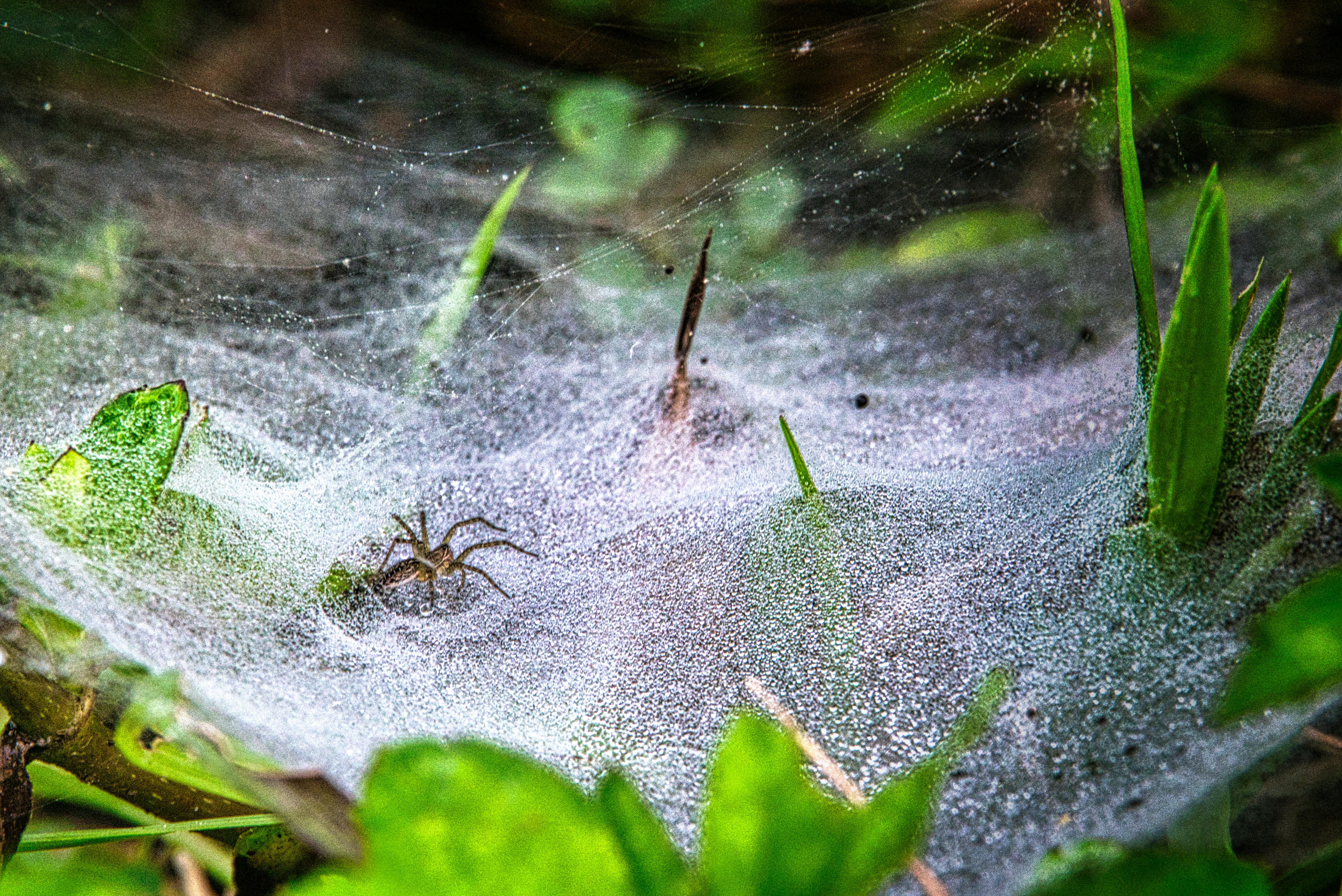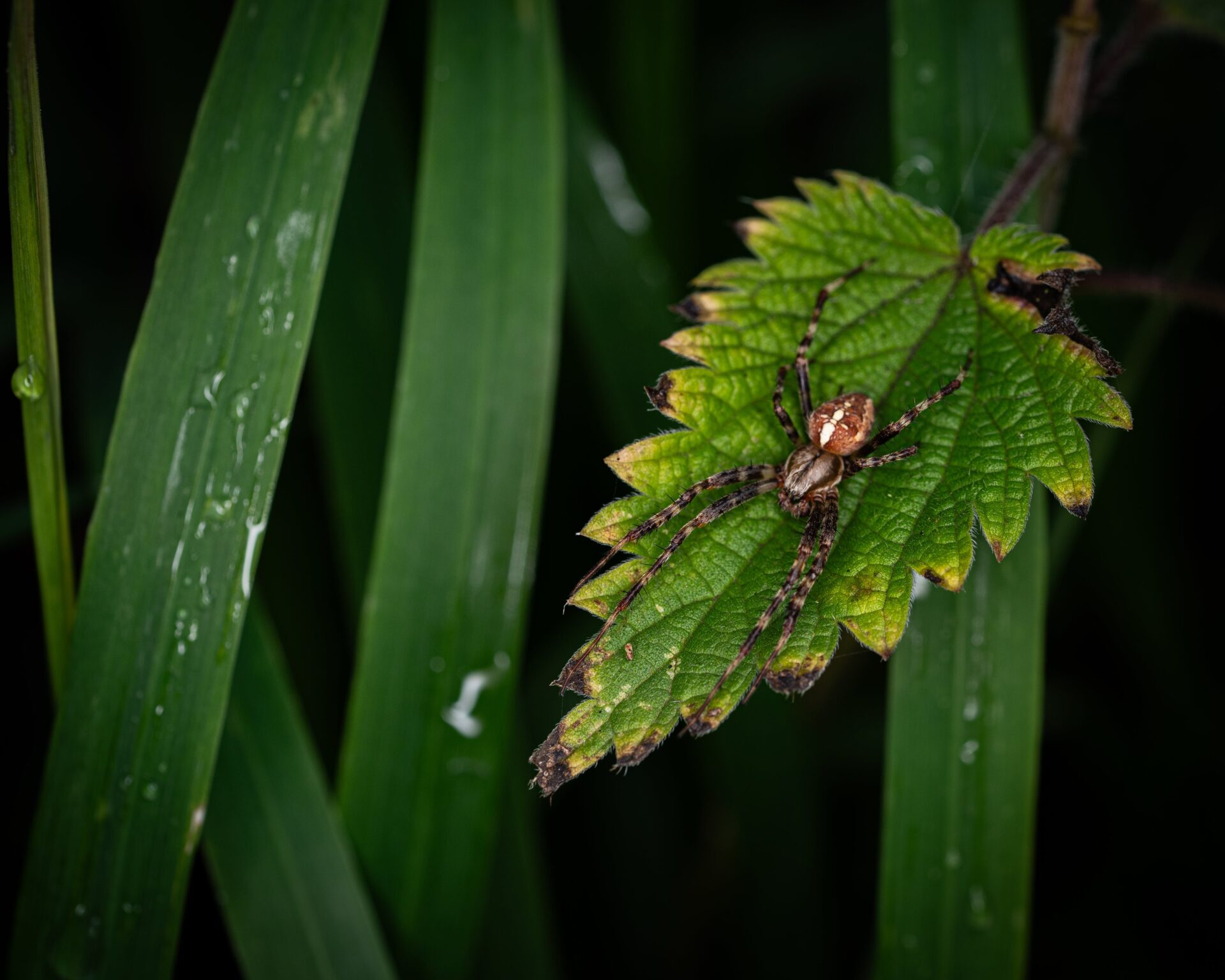Spider mites are one of the most common pests on strawberry plants. They can cause damage to the leaves and fruit of the plant, leading to reduced yields and poor plant health. Fortunately, there are several strategies you can use to get rid of spider mites on strawberry plants. In this article, we will discuss the different methods for eliminating spider mites and preventing them from coming back.Identifying spider mites on strawberry plants is important for maintaining a healthy garden. Spider mites are tiny, eight-legged arachnids that feed on leaves and fruit of the plant. They can be difficult to spot, but there are some signs to look out for.
One way to identify spider mites is by the webbing they create. Spider mites spin webs of silk which will be visible on the underside of leaves or between clusters of strawberries. The webs are often visible if you turn over the leaves and look closely.
Another sign of spider mites is yellow speckles or stippling on the upper surface of leaves. These yellow spots are caused by the mites sucking sap from the plant, leaving behind yellow dots or stippling marks.
You can also check for signs of the actual mite itself by looking closely at the underside of leaves where they tend to congregate in large numbers. The spider mite itself has a small oval-shaped body with four pairs of legs and is usually black or red in color.
If you suspect your strawberry plants have a spider mite infestation, it’s important to act quickly in order to prevent further damage to your plants. You can use a variety of methods such as insecticidal soaps, neem oil, or horticultural oils to get rid of these pests and keep your garden healthy!
What Causes Spider Mites on Strawberry Plants?
Spider mites are a common pest that can affect strawberry plants. They are small, sap-sucking insects that feed on plant leaves and stems, causing them to become yellow and dry. In severe infestations, spider mite webs can be seen on the undersides of leaves. Spider mites thrive in hot, dry conditions and can quickly multiply in large numbers, making it important to take preventive measures to keep them at bay.
The most common cause of spider mite infestations is environmental stress. This includes extreme temperatures, inadequate soil moisture, or air pollution from nearby industries or vehicles. Another common cause of spider mite infestations is overcrowding of plants in the garden or landscape. When plants are placed too close together, there is not enough air circulation which creates an ideal environment for spider mites to breed and thrive.
In some cases, spider mite populations may be inadvertently introduced into the garden through contaminated soil or potting mix from other gardens or nurseries. The use of chemical fertilizers or pesticides can also contribute to a spider mite infestation by killing off beneficial predators that would normally control populations of these pests.
To prevent and control spider mites on strawberry plants, it is important to practice good gardening habits such as proper spacing between plants and avoiding overcrowding; providing adequate water during dry periods; avoiding chemical fertilizers and pesticides; monitoring for signs of infestation; and removing affected leaves or plants when possible. In cases where populations have become out of control, it may be necessary to use a pesticide specifically formulated for controlling spider mites on strawberry plants.
Natural Remedies for Getting Rid of Spider Mites on Strawberry Plants
Strawberry plants are a favorite among gardeners, due to their sweet and juicy fruit. Unfortunately, they can be prone to spider mite infestations. Spider mites are tiny pests that feed on the plant’s leaves and can quickly damage the foliage. If left unchecked, they can even kill the plant. Fortunately, there are several natural remedies that can be used to get rid of spider mites on strawberry plants.
One of the most effective natural remedies is insecticidal soap. This soap is made from natural oils that will kill spider mites and other pests without harming beneficial insects or your plants. Simply mix 2 tablespoons of insecticidal soap in 1 gallon of water and spray it directly onto the affected plants. Be sure to get both sides of the leaves for best results.
Another natural remedy is neem oil, which is derived from the neem tree and has been used for centuries as a natural pesticide. Neem oil works by disrupting the life cycle of spider mites, preventing them from reproducing and spreading throughout your garden. Mix 2 teaspoons of neem oil in 1 gallon of water and spray it directly onto affected plants every 7-10 days until the infestation is gone.
Finally, you can also try introducing beneficial insects into your garden such as ladybugs or lacewings. These beneficial insects will feed on spider mites, helping to keep your strawberry plants pest-free. You can purchase these beneficial insects online or at your local garden center.
By using these natural remedies, you can effectively get rid of spider mites on your strawberry plants without resorting to harsh chemicals or pesticides. With a little bit of effort and some patience, you’ll be able to keep your strawberries healthy and pest-free!
Physical Control Measures for Controlling Spider Mite Infestations on Strawberry Plants
Spider mites are a common pest of strawberry plants that can cause significant damage if not managed correctly. Physical control measures are often the best way to manage spider mite infestations on strawberry plants. These measures include removing infested leaves and branches, pruning away affected areas, and using barriers or traps to prevent further spread of the pests.
Removing infested leaves and branches is an effective way to help control spider mites on strawberry plants. This is best done by hand-picking the affected foliage or clipping away infected areas with pruning shears. Removing the infested material helps reduce the overall population of mites in an area, as well as reducing the amount of egg-laying sites available for future generations.
Pruning away affected areas is another physical control measure that can be used to help manage spider mite infestations on strawberry plants. Pruning away heavily infested branches can help reduce overall populations by removing potential egg-laying sites and food sources for the pests. Pruning should be done carefully to avoid damaging healthy plant tissue, and all removed material should be discarded immediately to prevent further spread of the pest.
Using barriers or traps is another way to physically control spider mite infestations on strawberry plants. Barriers made from nylon netting or plastic sheeting can be placed around vulnerable plants to prevent adult mites from entering them, while sticky traps placed around the perimeter of a garden can help detect early signs of an infestation before it becomes too severe.
Physical control measures are an effective way to manage spider mite infestations on strawberry plants and should be used in conjunction with other management strategies such as chemical treatments or biological controls for best results.
Chemical Control Measures for Controlling Spider Mite Infestations on Strawberry Plants
Spider mites, tiny arachnids found on many plants, can cause damage to strawberries by sucking the juice out of the fruit. These pests can quickly become a problem in a strawberry patch, so it is important to take measures to control them. One of the best ways to do this is through chemical control measures.
Chemical insecticides and acaricides are available that can be used to control spider mites on strawberry plants. These products typically contain active ingredients such as bifenthrin, acephate, or fenpyroximate that will kill spider mites on contact or provide residual protection against them. It is important to follow the product label directions carefully when using these products as they can be harmful to humans and other beneficial insects if not used properly.
In addition to insecticides and acaricides, certain miticides can also be used for spider mite control on strawberry plants. Miticides are specifically designed to target mites and may be more effective than general insecticides at controlling spider mite infestations. These products typically contain active ingredients such as sulfur or petroleum oil which can help reduce populations of spider mites without harming beneficial insects or pollinators.
It is important to note that while chemical control measures can help reduce populations of spider mites on strawberry plants, they should only be used in combination with other control methods such as cultural practices and biological controls in order to provide the most effective protection against these pests.

Preventing Spider Mite Infestations on Strawberry Plants
Spider mites can cause serious damage to strawberry plants and can be difficult to get rid of. To prevent spider mite infestations, there are some simple steps you can take. First, it’s important to keep the area around your strawberry plants well-watered and free of weeds and debris. This will help reduce the number of areas where spider mites can hide and thrive.
Second, it’s important to monitor your strawberry plants for signs of spider mite infestation such as yellow or white spots on the leaves, webs between the leaves, or a dusty appearance on the leaves. If you spot any of these signs, it’s best to take action quickly to prevent further infestation.
Third, using beneficial insects such as ladybugs or predatory mites can help control spider mite populations on your strawberry plants. These insects feed on spider mites and other pests, helping keep populations in check and preventing an infestation from taking hold.
Finally, it’s important to use an insecticidal spray or dust specifically formulated for controlling spider mites as soon as you spot signs of an invasion. These products will kill adult spider mites as well as larvae and eggs, helping get rid of existing populations and preventing new ones from forming.
By following these simple steps, you can help protect your strawberry plants from damaging spider mite infestations. With proper care and monitoring, you can ensure that your strawberry plants stay healthy and productive for years to come!
Common Mistakes Made in Treating Spider Mites on Strawberry Plants
Spider mites are a common pest of strawberry plants and can cause significant damage, reducing yields and plant vigor. Treatment of spider mites is essential for successful strawberry production, however, there are some common mistakes made in treating these pests.
One of the most common mistakes is to wait too long before treating for spider mites. If left unchecked, spider mite populations can quickly become large and difficult to control. It is important to monitor plants regularly and treat as soon as signs of infestation are detected.
Another mistake is to use the wrong type of treatment. Different types of treatments have different levels of effectiveness against spider mites, so it is important to select the correct one for your situation. In addition, some treatments may have side effects on beneficial insects or other pests that may be present in the system.
It is also important to use treatments correctly by following label instructions closely. Not following directions could result in ineffective control or even damage to the plants. Care should also be taken when applying any chemical treatments around sensitive areas such as water sources or areas frequented by children or pets.
Finally, many growers make the mistake of not monitoring plants after treatments have been applied. Continuous monitoring is essential for effective control since new infestations can appear quickly if conditions are favorable for the spider mites.
Taking steps to avoid these common mistakes can help ensure successful treatment and control of spider mites on strawberry plants.
Benefits of Getting Rid of Spider Mites on Strawberry Plants
Spider mites are a common pest problem for strawberry plants. They feed on the plants, causing yellow spots on the leaves and weakening the plant. They can also be vectors for plant diseases. Fortunately, there are several methods for getting rid of spider mites on strawberry plants. Taking steps to control and eliminate them can help protect your strawberry plants from serious damage.
One of the biggest benefits of getting rid of spider mites on strawberry plants is that it will improve the overall health and productivity of your crop. Without spider mites, your plants will be healthier and more resilient, which can lead to larger yields and better-tasting fruit. Spider mite damage can also make it harder for your plants to take up nutrients, resulting in lower yields and smaller fruit size.
Additionally, getting rid of spider mites can help protect your strawberry plants from disease-causing pathogens that they may carry. Spider mites are able to spread plant diseases quickly by moving from one plant to another. Removing them from your garden or greenhouse will help reduce the risk of these pathogens spreading and causing serious damage to your crop.
Finally, getting rid of spider mites is important because it can help prevent an infestation from occurring in the first place. If you have a large population of spider mites in one area, they may spread out into other parts of your garden or greenhouse if left unchecked. Taking steps to get rid of them now will help keep future populations at bay and prevent an infestation from taking hold later on down the line.

Conclusion
Spider mites can be a major problem for strawberry plants. To get rid of spider mites, you must first identify the infestation and then use a combination of chemical and non-chemical treatments to eliminate them. These can include pruning the affected plant, removing webs, spraying with an insecticidal soap or neem oil solution, and introducing beneficial insects such as ladybugs.
Creating an environment that is less hospitable to spider mites is also important. This includes reducing humidity levels, avoiding overcrowding of plants, keeping the area weed free, and providing adequate air circulation.
Overall, getting rid of spider mites on strawberry plants is possible with some effort and the right approach. With proper identification and treatment methods in place, you should be able to keep your strawberry plants healthy and free from these pests.



